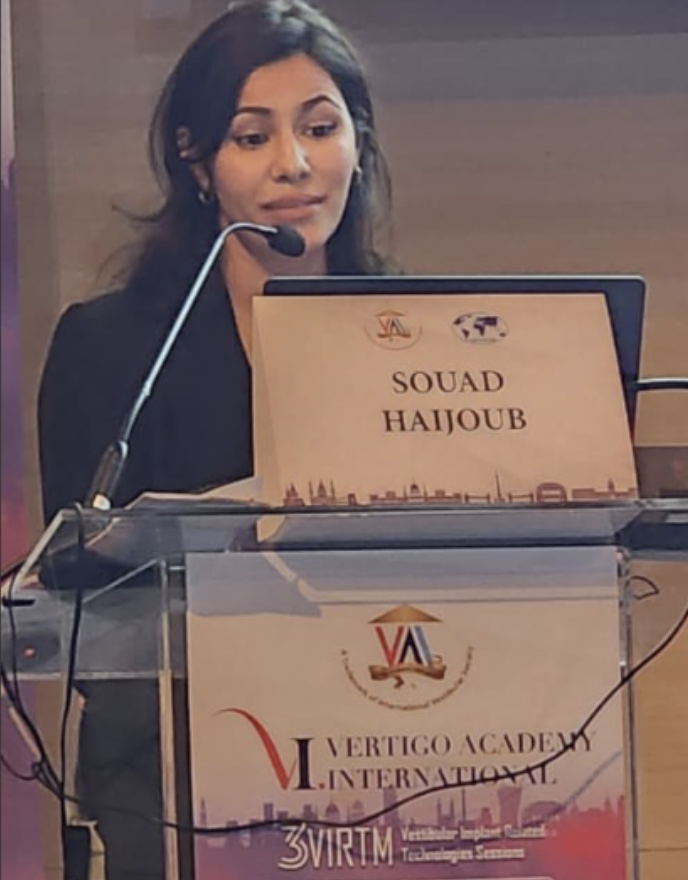🔬 Advancing Treatment for Permanent Vestibular Loss: BalanceBelt Presented at Vertigo Academy International
April 2025 – Budapest
At this year’s Vertigo Academy International, a prestigious global event where leading experts in vestibular disorders meet biennially, our colleague Souad, PhD candidate at the University of Groningen and MUMC, proudly represented BalanceBelt.
In her presentation, she addressed a central and increasingly urgent question:
➡️ How can we best treat patients with permanent bilateral vestibular loss (BVL)?
Current Standard: Vestibular Rehabilitation Alone

Souad highlighted that while vestibular rehabilitation remains essential, its impact has limitations for many patients:
- Many BVL patients show early improvements in balance and mobility
- Maximum gains are typically reached within 3–6 months
- Ongoing therapy (1–2x/week) is needed to maintain these improvements
Yet, despite strong motivation, many patients find rehab alone insufficient. Particularly in children with BVL and motor development delays, additional support is needed.
🧠 Understanding the Inner Ear: Beyond the Canals
Souad emphasized the role of the otolith system, part of the inner ear that helps detect linear movement and contributes to our sense of balance:
“Not all patients with BVL have a complete loss of otolithic function. Yet, most are only screened on canal function. Some retain partial otolith activity—so it’s vital that we consider this in treatment design.”
🔍 Two Promising Innovations
She discussed two advanced solutions:
- 🦾 The BalanceBelt – a wearable balance aid already in clinical use
- 🧠 The vestibular implant – currently under clinical investigation
Her focus:
The BalanceBelt’s impact on balance and mobility in severe BVL patients.
A long-term study showed:
- Significant improvements in balance and gait
- 79% adherence to wearing the belt after two years
🔬 What’s Next in Research?
Souad’s next research phase aims to identify which patients benefit most from the BalanceBelt, using a two-step process:
Step 1:
Screen patients for otolithic function using the ocular counter-roll reflex
- Group A: Complete otolith loss
- Group B: Residual otolith activity
Step 2:
Compare treatment outcomes in both groups to optimize patient targeting.
🧪 Additional Research Questions:
- Can motion sensors help objectively measure gait and posture improvements?
- How do patients’ visual responses and sense of upright shift with and without the BalanceBelt?
- How does the BalanceBelt compare to a placebo in terms of patient activity levels?
We’re excited to be at the forefront of innovation in vestibular care and incredibly proud of Souad’s important work.
Together, we’re helping improve the lives of patients with BVL worldwide.